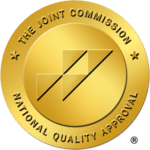Addiction to substances can be influenced by a variety of elements. Addiction affects people in many different ways, some of which are life-threatening. For example, people who suffer from heroin addiction risk damaging nearly every organ in their body, including heart and brain damage amongst others. Accidental drug overdose is a leading cause of death among persons under the age of 45.
According to the National Center for Drug Abuse Statistics, drug use is highest among persons between the ages of 18-25 at 39% compared to people of ages 26-29, at 34%. Consequently, 1.7% of Americans 12 and older use illegal drugs. 53 million or 19.4% of people 12 and over have used illegal drugs or misused prescription drugs within the last year. Addiction is a complex disease that does not mean a final sentence.
What are the Risk Factors for the Development of Addiction?
The risk factors for addiction are categorized as:
- Biological
- Psychological/social
- Or both biological and psychological
Biological risk factors include genetics (having family members who struggle with addiction), prenatal exposure to drugs (exposure to drugs at birth), structural changes in the brain (brain damage), and neurochemicals (the way certain hormones act like dopamine impact your brain chemistry).
Psychological risk factors include risk-taking behavior, impulsiveness, anxiety, or depression. Biological risk factors are more often risk factors for addiction, while psychological risk factors are more often predictors of increased risk for addiction.
According to NIDA (National Institute on Drug Abuse), risk factors are “external or internal characteristics or conditions that influence a person’s likelihood to take drugs”. Risk factors can be environmental/social, biological, and genetic. The risk factor common in all three is risk-taking behavior.
For example, if an individual enjoys activities that involve risk-taking behavior such as skydiving, then there is a higher risk they will become addicted to drugs because they have already taken risks with other behaviors.
Protective Factors for Addiction
Protected factors refer to enhancing factors that protect against risk factor development. These risk-reducing elements would increase resiliency or protection against developing addictive behaviors.
There is no one risk factor associated with addiction risk. But there are many types of risk factors, including individual vulnerability risk, family history risk, peer pressure risk, and cultural acceptance risk.
Risk Factors for Addiction
Risk factors are factors contributing to the development of a disorder or condition. There are specific risk factors associated with addiction, as well as protective factors that can protect against developing addictive behavior.
Understanding risk factors is the first step to understanding why certain people become addicted to drugs or alcohol. Risk factors are generally referred to as predisposing factors, something that increases the risk for addiction occurring. For example, risk factors may include socioeconomic status, gender, genetics, availability of drugs, and family history of substance abuse.
In addition, there are determinants of health that can affect general health status and illness, such as socioeconomic status, race, ethnicity, and gender. A person is more likely to develop an addiction if he/she has certain biological vulnerabilities and a family history of substance abuse.
Children who have parents or siblings struggling with addiction may be at greater risk than those without an addicted parent or sibling. Even though risk factors are not guarantees of future addiction, they can increase risk. Personal risk factors for addiction include being male and being in young adulthood. For women specifically, risk factors include early childhood sexual abuse and living in poverty.
The risk of developing an addiction links most closely with genetics. Studies demonstrate that the risk of addiction is higher in first-degree relatives of addicts in comparison to those who do not have a relative who is suffering from addiction.
This suggests that some people are more genetically predisposed to develop addictive behaviors than others. Researchers have mapped out genes responsible for alcohol dependence and certain opiate addictions, but there seem to be many other genetic influences at play.
Which Factors Play a Big Role in Whether Someone Becomes Addicted to Drugs and/or Alcohol?
Genetics
Genetics plays a role in the development of addictions. There is a risk of addiction if one or more immediate family members have an addiction. The risk increases with the number of parents who have substance abuse problems, as well as being related to alcoholics, smokers, and those addicted to illicit drugs.
Risk is also increased with the proximity of parents’ addictions, such as peer pressure. Most studies suggest that 40-60 % risk of vulnerability may be a result of a person’s genetic profile. The risk genes involved in developing an addiction are not known exactly.
Environmental Factors
Not much surprise but your environment can influence the risk of addiction. Peer pressure is risk factor #1, followed by the risk of developing an early age drinking problem or getting into smoking at a young age. The risk among adolescents with conduct problems was said to be increased fourfold compared to those without.
There are many treatments for addiction, but not all addicts find success. Some choose to go cold turkey while others attend rehab programs like NA (Narcotics Anonymous) or AA (Alcoholics Anonymous), there are even other forms that include group counseling for support for addicts. Some use medication as well as therapies. The types of medication and therapy may vary per case.
Early Use
Early use of substances can be a risk factor for developing addiction later in life. It is clear that risk factors do lead to addiction, but not everyone that has risk factors turns into an addict. Many risk factors have been identified, but how risk factors develop does not always indicate the outcome of the risk.
The psychological risk factors are more compelling than physical risk factors because they are directly related to why people use drugs and alcohol excessively. Some psychological risk factors include low self-esteem or self-worth, peer pressure, depression, or other mental conditions.
Dual Diagnoses
Dual diagnoses are common in the addiction recovery community. A dual diagnosis refers to someone who is simultaneously affected by a mental health disorder and an addiction. Many risk factors for addiction are the same risk factors that lead to mental illness, including environmental risk factors.
It has become clear that there is a strong connection between co-occurring disorders of addiction and depression, post-traumatic stress disorder (PTSD), bipolar disorder, borderline personality disorder, obsessive-compulsive disorder (OCD), schizophrenia, PTSD, or other psychotic disorders.
The risk can be greater when one of these conditions goes untreated because it may lead to the development of the other condition(s) through self-medicating with drugs or alcohol. Some risk factors have not been proven directly related but have shown a correlation in some cases.
Types of Addiction and Signs of Substance Abuse
Heroin is considered to be the most addictive drug. According to research, an estimated 23% of people who use heroin become addicted to it. Cocaine is considered less addictive than heroin but still classified as highly addictive with about 17% risk for addiction.
Although cigarettes are not typically thought of as a stimulant, nicotine remains one of the most addictive substances on earth with studies showing that approximately 35% of men and 13% of women who smoke cigarettes get hooked. Alcohol has also been known to be highly addictive with risk rates around 15-20%.
Some other drugs that have moderate risk include:
- Crack cocaine
- Methamphetamine
- Morphine
- Opium/painkillers
- Marijuana/cannabis
- Amphetamine/speed or ecstasy
What Are Common Signs and Symptoms of Addiction?
Depending on the substances, the signs and symptoms of addiction will vary. Some can be more detectable than others. In general, the signs and symptoms of addiction include:
- Isolation
- Inability to stop or control the use
- Decline in personal hygiene or appearance
- Decline in school or work performance
- Developing a tolerance so that more drugs or alcohol are necessary to achieve a desirable effect, which may lead to bingeing episodes on a regular basis
- Significant risk-taking behaviors related to drug use such as sharing needles with others, borrowing medications from other people, using unprescribed drugs of abuse or alcohol
What Are My Treatment Options for Addiction?
The continuum of care is crafted to treat people at different stages of addiction recovery. The lengths of these treatments vary depending on the severity of the addiction.
The initial stage of addiction treatment is detoxification. Detox helps the addict withdraw from substances safely and without risk of death or serious withdrawal symptoms such as seizures and delirium tremens. After detox, addicts will usually spend a few weeks in either outpatient rehab or intensive outpatient rehab.
These programs help recovering addicts re-socialize and learn how to live without using drugs again while also treating the psychological aspects of addiction such as underlying mental health disorders that may have contributed to addiction in the first place (such as depression).
Recovering addicts can then enter into transitional housing, which offers them a safe environment to stay sober while they work on getting their life back together after quitting drugs. After completing these stages, there are many options for continuing care for substance abuse.
Residential Treatment
Inpatient or residential treatment or inpatient treatment for substance abuse is a great option for addicts who need around-the-clock care and a supervised environment to recover from addiction. Residential treatment provides the opportunity for people struggling with addiction to focus on their recovery without any distractions or risk of relapse. These treatment programs can range in length from 30, 60, or 90 days.
With residential rehab, individuals can receive more intensive care by attending therapy on a daily basis and learning healthy coping strategies such as stress management and 12 step programs.
Since quitting drugs isn’t easy, some people might benefit more from long-term treatments that allow them to attend therapy sessions less frequently than every day so they don’t burn out while still receiving support and guidance in staying clean. For example, some people may only go to therapy once per week or multiple times per week depending on their severity.
Outpatient Treatment
Outpatient treatment is a flexible option for those who are unable to quit using drugs cold turkey. The average length of treatment at an outpatient program for addiction is 30 days. They can also attend group therapy sessions on a daily basis or every other day to learn coping strategies and how to live without being under the influence of drugs or alcohol.
Some people have more severe addictions that require multiple treatments for them to be successful in quitting their addiction once and for all. These individuals need outpatient treatment as well as an intensive treatment (or IOP) where they receive individual counseling frequently throughout the week so they don’t risk relapsing back into their addiction.
Dual Diagnosis Treatment
Dual diagnosis treatment is when addicts are treated for their addiction but also receive treatment for any co-occurring disorders or mental health issues. The risk factor of this is that it becomes more difficult to treat the addiction when another disorder is present because treating both at once can be overwhelming.
Aftercare Programs
Aftercare programs help addicts transition into daily life. They provide addicts with a 12-step program, support system from those in the community, and sponsor meetings. The risk factor for aftercare programs is that not everyone makes it past their first month of rehab. Therefore, they do not always see the full effect of these programs unless they go through long-term rehabilitation.
What Resources Are Available After Addiction Treatment?
The resources available after addiction treatment vary depending on the treatment used. For example, after completing inpatient or residential rehab, some addicts enter into transitional housing programs that offer recovery support for anywhere from six months to two years. This stage of recovery offers safe living conditions with intense support groups and activities to help former addicts get their lives back on track.
Recovery does not stop there; it is more of a lifelong commitment of making healthy choices and seeking support when needed. Many recovering addicts seek out 12-step programs for continued social support after addiction treatment.
Other people choose sober living homes where they can live with other recovering addicts while paying rent on their own to create new life skills that will carry them through outside of rehab into sobriety on their own if necessary.
Discover a New Beginning at Lifetime Recovery
Combatting the influences of substance use can be tricky. Avoiding certain friend groups and coming to terms with your internal wars requires inner strength. Addiction is a disease that spreads from yourself to your loved ones.
One moment, you’re binge drinking after stressful days at work, then sooner or later, you begin to lose track of your habits. Lifetime Recovery channels the resources necessary to treat substance use. If you or a loved one could use some help overcoming binge drinking problems, contact us today.


